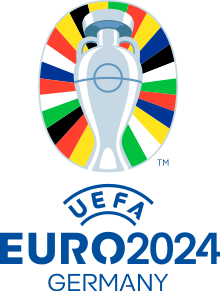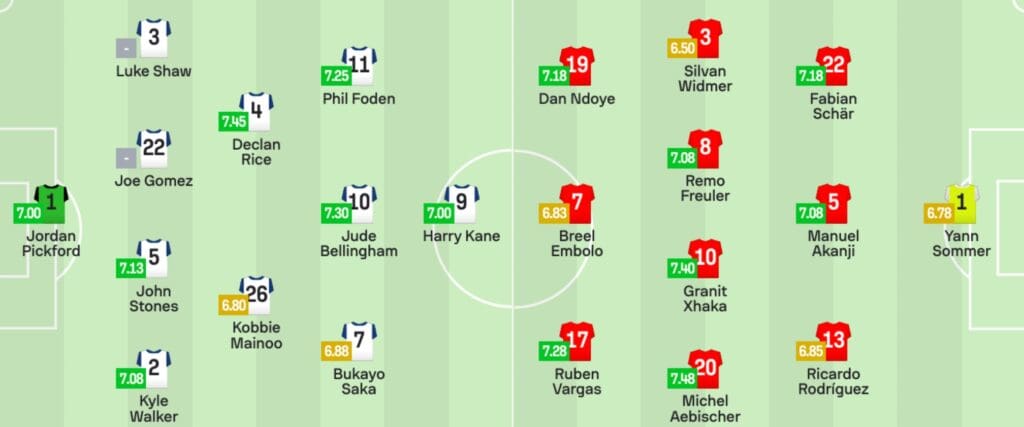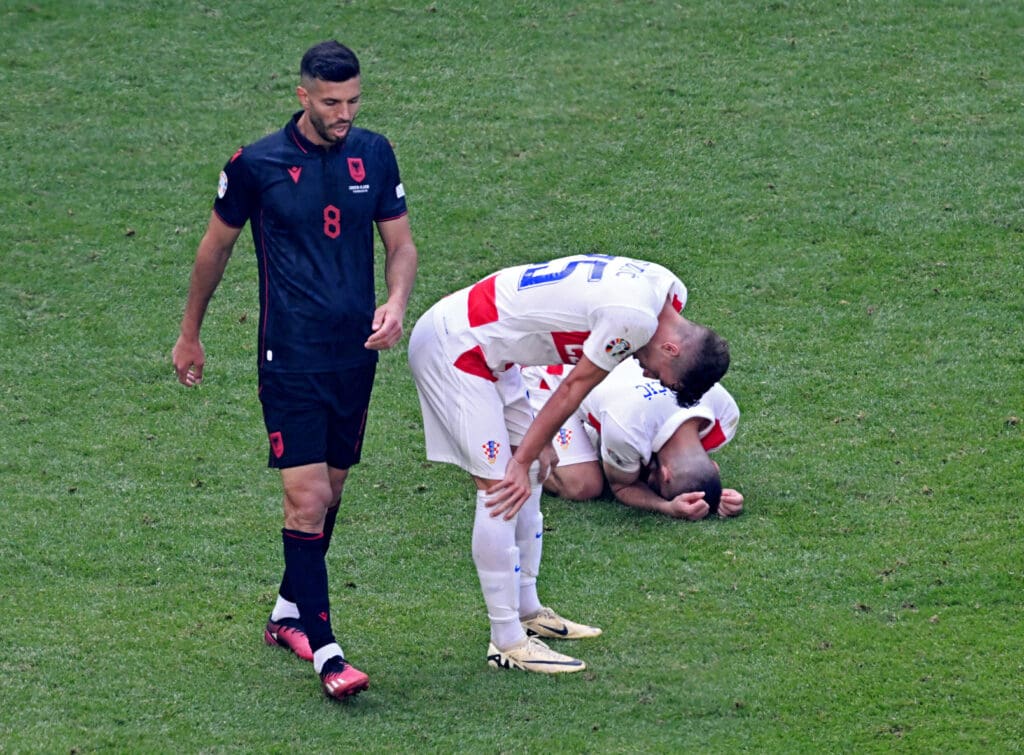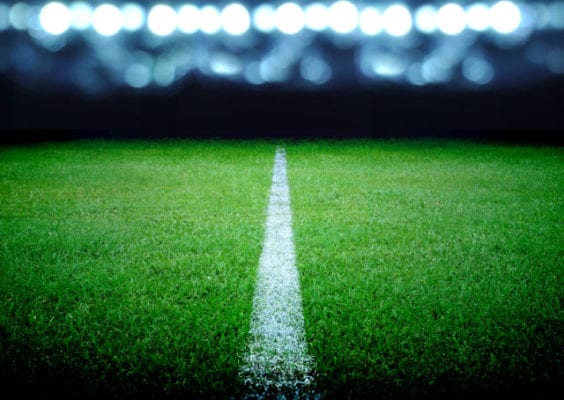Croatia vs Italy predictions ahead of this crucial clash at Euro 2024. Croatia need a win against Italy and hope Albania don’t beat Spain to advance in Euro 2024 Group B. Read on for our free betting tips and predictions.


European Championship | Group Stage – Jun 24, 2024 at 8pm UK at Red Bull Arena

Don’t have a William Hill account? Click below to claim this offer👇
Croatia vs Italy Predictions
Key Stats
– Croatia have conceded five goals in their two group matches.
– Italy need just a point to progress to the knockout stages.
– Federico Chiesa has been one of Italy’s standout performers, offering pace and creativity in attack.
Can Italy Secure Their Spot in the Last 16 Against Croatia?
With Euro 2024 in full swing, Croatia and Italy find themselves in a tense battle for the second spot in Group B. As the teams prepare to clash on Monday night in Leipzig, the stakes couldn’t be higher. Italy require just a point to secure their progression to the knockout stages, while Croatia must win and hope that Albania do not surprise group leaders Spain.
Match Preview
Croatia have endured a turbulent group stage so far, starting with a 3-0 defeat against Spain and a 2-2 draw with Albania. Despite showing resilience to overturn a deficit against Albania, Croatia conceded a last-minute equaliser, leaving them with a solitary point from two matches. An ageing midfield and a lacklustre attack have plagued Croatia’s campaign, with five goals conceded indicating defensive vulnerabilities. Manager Zlatko Dalic faces tough decisions as he seeks to guide his team to the last 16.
Italy, on the other hand, experienced a mixed bag in their group matches. A narrow 1-0 defeat to Spain followed their opening victory over Albania. Despite a solid defensive record in recent tournaments, Italy looked shaky against Spain, allowing numerous chances. With a 10-game unbeaten run at the Euros snapped, the reigning champions must quickly regain their composure. Manager Luciano Spalletti will look to fine-tune his squad, knowing that a draw will be sufficient to progress.
Team Analysis
Croatia
Croatia have struggled to find their rhythm in this tournament, largely due to an ageing squad and a lack of clinical finishing. Dominik Livakovic will start in goal, with a backline that includes the experienced Josko Gvardiol and Ivan Perisic, who has been deployed at left-back. Luka Modric, the captain, remains a key figure in midfield, partnering with Mateo Kovacic and Luka Sucic. Ante Budimir may replace Bruno Petkovic up front, hoping to provide a more dynamic presence.
Croatia’s form in the lead-up to the tournament was promising, with four consecutive wins. However, their defensive frailties have been exposed, conceding five goals in their two group matches. Offensively, they have been more productive than in previous tournaments, yet the goals have not come easily, highlighting their struggles in the final third.
Italy
Italy’s campaign has been defined by their defensive solidity, despite the hiccup against Spain. Gianluigi Donnarumma will continue as the captain and goalkeeper, with a defence featuring Alessandro Bastoni and Riccardo Calafiori. The midfield could see changes, with Bryan Cristante potentially replacing Jorginho, and Matteo Darmian providing an alternative at right-back. Up front, Mateo Retegui might get the nod, supported by Federico Chiesa and Lorenzo Pellegrini.
Italy’s strength lies in their organised defence and efficient attack. Despite a lack of goals in recent matches, their build-up play remains strong. Spalletti’s tactics have focused on maintaining possession and creating chances through quick transitions. Italy’s ability to adapt and respond to different match situations will be crucial against a Croatian side desperate for victory.
Expected Lineups
Croatia: Livakovic; Stanisic, Sutalo, Gvardiol, Perisic; Modric, Sucic, Kovacic; Pasalic, Budimir, Kramaric.
Italy: Donnarumma; Darmian, Bastoni, Calafiori, Dimarco; Cristante, Barella; Chiesa, Pellegrini, Zaccagni; Retegui.
Tactical Insights
Croatia will likely adopt an aggressive approach, given their need for a win. Modric and Kovacic will orchestrate the play from midfield, aiming to exploit Italy’s defensive weaknesses. Croatia’s success may hinge on their ability to convert possession into goals, a task that has proved challenging so far.
Italy, in contrast, will focus on defensive organisation and counter-attacks. Spalletti’s men are expected to sit deep, absorb pressure, and exploit spaces left by Croatia. The pace of Chiesa and the creativity of Pellegrini will be crucial in launching quick counter-attacks. Italy’s defensive resilience will be tested, but their ability to remain composed under pressure could be the deciding factor.
Key Players
For Croatia, Luka Modric remains the heartbeat of the team. His vision and passing ability can unlock defences, while Kovacic’s energy and drive will be vital in midfield battles. In defence, Gvardiol’s presence will be crucial in containing Italy’s forwards.
Italy will rely on Donnarumma’s leadership and shot-stopping skills. Federico Chiesa’s pace and directness can trouble any defence, while Barella’s midfield dynamism provides balance and support. Retegui’s role as the focal point of the attack will be essential for Italy’s offensive efforts.
Tactical Analysis: Deep-Dive
Offensive and Defensive Strategies
Croatia’s approach in Euro 2024 has been marred by defensive lapses and an inability to capitalise on offensive opportunities. Despite boasting experienced players like Luka Modric and Mateo Kovacic in midfield, the team has struggled to maintain solidity at the back. Ivan Perisic, typically a winger, has been utilised as a left-back, indicating a lack of depth and tactical adjustments from Zlatko Dalic. The defensive pairing of Josko Gvardiol and Josip Sutalo has not been impregnable, with Croatia conceding five goals in two matches, underscoring their vulnerability.
Offensively, Croatia have been more prolific in terms of shots and attempts on target compared to their previous tournaments, yet their conversion rate remains poor. Bruno Petkovic and Andrej Kramaric have been inconsistent, and the absence of a reliable finisher has hampered their progress. Dalic’s strategy of maintaining high possession (66.9%) has not translated into effective goal-scoring opportunities, reflecting a disconnect between midfield dominance and attacking efficiency.
Italy, in contrast, have employed a more pragmatic approach under Luciano Spalletti. Their strategy revolves around defensive solidity and rapid counter-attacks. Despite their loss to Spain, Italy’s backline, featuring Gianluigi Donnarumma, Alessandro Bastoni, and Riccardo Calafiori, has been relatively robust. The midfield duo of Bryan Cristante and Nicolo Barella offers a balance of defensive coverage and forward thrust, crucial for Italy’s transitional play.
Offensively, Italy have struggled to create clear-cut chances, evident in their fewest shots in a European Championship game against Spain. However, the pace and creativity of Federico Chiesa and Lorenzo Pellegrini provide a significant threat on the break. Mateo Retegui, likely leading the line, will be pivotal in converting these opportunities.
Individual Performances of Key Players
Luka Modric remains the linchpin for Croatia, orchestrating play from midfield with his vision and passing accuracy. Despite his age, Modric’s performances have been commendable, but he requires more support from his teammates. Mateo Kovacic, another key player, has shown energy and drive but lacks the finishing touch needed in crucial moments.
For Italy, Federico Chiesa has been a standout performer, using his pace and dribbling skills to unsettle defences. Gianluigi Donnarumma’s leadership and shot-stopping abilities have also been crucial for Italy, providing a stable presence at the back. Nicolo Barella’s dynamism in midfield adds a significant edge to Italy’s overall gameplay, contributing both defensively and offensively.
Impact of Management on Team Performance
Zlatko Dalic’s tenure with Croatia has been a mixed bag in this tournament. While his experience and tactical knowledge are undeniable, his decisions have sometimes seemed outdated, particularly in handling an ageing squad. The reliance on seasoned players like Modric and Perisic, while understandable, has not been complemented by adequate support from younger talents. Dalic’s inability to address defensive frailties and find a reliable goal scorer has significantly impacted Croatia’s performance.
Luciano Spalletti, on the other hand, has brought a disciplined and structured approach to Italy. His experience in Serie A, particularly with Napoli, is evident in Italy’s organised defence and strategic counter-attacks. However, Spalletti’s challenge lies in enhancing Italy’s attacking potency, ensuring they convert defensive stability into offensive success. His tactical acumen is commendable, but the pressure is on to deliver results in high-stakes matches.
Analysis of Expected Goals
Croatia have generated numerous shots and attempts on target but their expected goals (xG) metric suggests a lack of clinical finishing. Despite having 18 total shots per game and 7.5 on target, their goal conversion rate remains subpar, indicating inefficiency in front of goal. This inefficiency is a critical area that Dalic needs to address to improve Croatia’s chances of progressing.
Italy’s expected goals metric is relatively balanced, given their fewer shots on target per game (4.5). Their xG reflects a more pragmatic approach, with a focus on quality over quantity in their chances. Spalletti’s strategy of controlled build-up play and counter-attacks has resulted in fewer but more precise goal-scoring opportunities.
Comparison of Tactics and Player Performances
Tactically, Croatia’s high possession game contrasts with Italy’s defensive solidity and counter-attacking strategy. Croatia’s reliance on midfield control and possession has not been effectively translated into goals, while Italy’s structured defence and swift counters have been more productive. Players like Modric and Kovacic exemplify Croatia’s possession-based play, whereas Chiesa and Retegui are emblematic of Italy’s counter-attacking prowess.
In terms of player performances, Italy have shown more cohesion and tactical discipline. Donnarumma, Chiesa, and Barella have been instrumental in Italy’s setup, providing a balanced approach. Croatia, while boasting individual talents like Modric and Perisic, have struggled with collective defensive and offensive synergy.
Suggestions for Improvement
For Croatia, enhancing defensive organisation and finding a reliable goal scorer are paramount. Integrating younger players like Luka Sucic into the starting lineup could provide the necessary energy and dynamism. Dalic must also refine their finishing techniques, ensuring that the high number of shots and attempts on target are converted into goals.
Italy need to focus on increasing their offensive output. Spalletti should encourage more fluid attacking movements and improve their shot accuracy. While maintaining their defensive discipline, Italy must also ensure that their transitions from defence to attack are swift and effective, maximising the talents of players like Chiesa and Pellegrini.
Strengths and Weaknesses of Strategies
Croatia’s strategy of maintaining high possession has its merits, allowing them to control the tempo of the game. However, their inability to convert possession into goals and their defensive lapses are significant drawbacks. Dalic’s reliance on veteran players has also limited their adaptability and dynamism.
Italy’s defensive organisation and counter-attacking strategy are robust, providing a stable foundation. However, their offensive struggles and lack of clear-cut chances highlight a need for tactical adjustments. Spalletti’s focus on defence sometimes hampers their attacking fluidity, a balance he needs to strike better.
Managerial Criticism
Zlatko Dalic’s approach has been heavily reliant on his experienced stars, which, while providing stability, has stifled the introduction of younger, more dynamic players. This reliance has exposed Croatia’s defensive vulnerabilities and lack of attacking sharpness. Dalic’s tactical rigidity has been a significant drawback, failing to adapt to the evolving demands of the tournament.
In contrast, Spalletti has managed to instill a disciplined and organised structure in Italy. However, his cautious approach has sometimes limited Italy’s offensive potential. The lack of creativity in the final third is a point of criticism, as Italy’s strategy could benefit from a more adventurous attacking setup to complement their strong defensive base.
Predictions
Best Bet: Italy to Win
Given Italy’s defensive discipline and counter-attacking prowess, they are positioned as favourites for this encounter. Croatia, having conceded five goals in their first two group matches, have shown significant defensive vulnerabilities. Italy, despite their loss to Spain, have displayed a robust defensive structure and the ability to strike effectively on the counter.
Luciano Spalletti’s side is likely to absorb Croatian pressure and exploit the gaps left by their opponents. With players like Federico Chiesa and Matteo Retegui in form, Italy have the offensive weapons to secure a narrow victory. This approach aligns with Italy’s traditional defensive solidity combined with opportunistic attacks.
Correct Score: Italy 2-1 Croatia
Both teams have exhibited defensive frailties, which suggests that goals will be scored on both ends. Italy’s strategic approach of defending resolutely and striking on the counter-attack should see them net twice.
Given Croatia’s desperation to win, they are expected to push forward, which might yield a goal for them as well. However, Italy’s structured defence and ability to convert chances make a 2-1 scoreline plausible. This result mirrors Italy’s potential to control the game’s tempo and Croatia’s necessity to take risks in their offensive play.
Goalscorer: Federico Chiesa
Federico Chiesa’s speed and knack for finding space will be crucial against Croatia’s porous defence. He has demonstrated his ability to create and convert chances, particularly in high-stakes matches.
Against Spain, Chiesa was a constant threat, and he is expected to continue in the same vein against Croatia. His ability to cut inside and take shots from various angles makes him a significant scoring threat. With Italy likely to play on the counter, Chiesa’s ability to exploit spaces behind the Croatian defence could see him finding the net.
Corner Prediction: Italy to Win More Corners
Italy’s tactical setup often results in earning more set-piece opportunities, particularly corners. Given Croatia’s need to attack, they may leave themselves open to counter-attacks, during which Italy can exploit wide areas and earn corners.
Italy’s tendency to build play from the back and utilise their flanks effectively suggests they will have more corner kicks. We can expect Italy to earn around 6-8 corners, while Croatia may earn fewer due to their potentially more direct approach in seeking a goal.
Shot on Target: Matteo Retegui
Matteo Retegui, positioned as the main striker, will be the focal point of Italy’s offensive efforts. His ability to find and exploit space in the penalty area ensures he will have opportunities to test the Croatian goalkeeper.
Retegui’s physical presence and keen eye for goal make him a prime candidate for registering shots on target. Given Italy’s counter-attacking strategy, Retegui is expected to have at least one or two shots on target as he capitalises on the spaces created by Italy’s dynamic wingers and midfielders.
Yellow Card: Luka Modric
Luka Modric, Croatia’s midfield maestro, will likely be involved in both defensive and offensive duties. Given the high stakes of the match, Modric might be compelled to commit tactical fouls to disrupt Italy’s counter-attacks. His role in breaking up play and his defensive responsibilities increase the likelihood of him receiving a yellow card. The intensity and physical nature of this crucial match will see Modric engage in challenges that could lead to a booking, especially as he tries to maintain control in midfield.
Assist Prediction: Lorenzo Pellegrini
Lorenzo Pellegrini’s vision and creativity position him as a prime candidate for providing assists. Operating behind the main striker, Pellegrini will have numerous opportunities to link up play and deliver key passes. His ability to find teammates in advanced positions and create scoring opportunities makes him a crucial player in Italy’s attacking setup. Pellegrini’s knack for delivering precise through balls and crosses could result in an assist, particularly with Italy’s focus on quick transitions and exploiting spaces in the Croatian defence.
Innovative Market: Total Team Shots on Target Over 4.5 for Italy
Considering Croatia’s defensive lapses and Italy’s tactical approach, Italy are likely to test Dominik Livakovic frequently. Italy have averaged 4.5 shots on target per game, and given Croatia’s vulnerabilities, they should meet or exceed this figure.
With players like Chiesa, Retegui, and Pellegrini capable of creating and taking chances, Italy are well-equipped to register a high number of shots on target. This market takes into account Italy’s offensive capabilities and Croatia’s defensive struggles, suggesting a busy evening for the Croatian goalkeeper.
Top UK Bookies & Best Sign Up Offers
Subscribe To Our Newsletter For Exclusive Tips
Want to have exclusive tips from experts tipsters delivered right into your inbox? Subscribe Now To Our Newsletter. We will never spam, we fully respect your privacy!



























